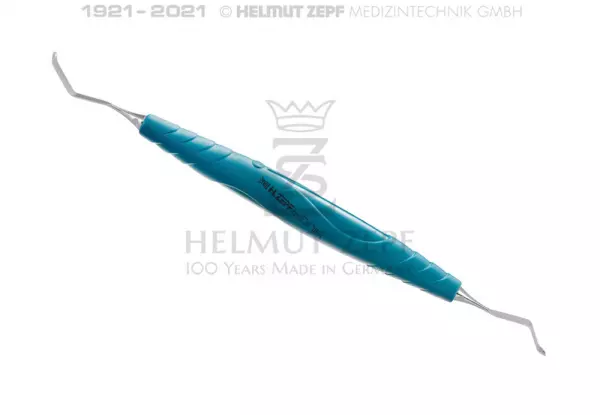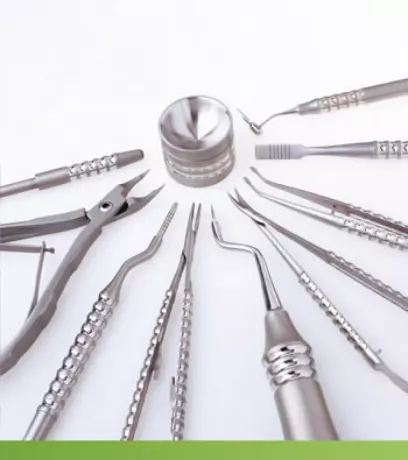
PA Universal Dental Instruments - Parodontology
24.548.01 APPLICATOR SUTURE PERIODONTAL, BLACK BIONIC HANDLE, INSERTS INTERCHANGEABLE 24.548.0...
Portal and digital medical technology fair of the largest MedTech cluster in Germany

PA Universal Dental Instruments - Parodontology
24.548.01 APPLICATOR SUTURE PERIODONTAL, BLACK BIONIC HANDLE, INSERTS INTERCHANGEABLE 24.548.0...

Surgical instruments for oral surgeons
Surgical instruments are an important criterion in the competence of an oral surgeon. The focus is...

Surgical instruments for veterinarians
SURGICAL INSTRUMENTS FOR VETERINARIANS For us, the animal counts like the human OERTELvet inst...

In the process of creating a duplicate of a dental model, a duplicator polymerisation cuvette is used. The cuvette is filled with a silicone mass. To ensure no air bubbles, the silicone mass is poured into the cuvette while the model is placed in a vibrating table. The silicone mass is cured at room temperature for fifteen minutes. It is then cooled to room temperature and inserted into the replica, which is ready to be used.
The polymerisation process is a very straightforward and effective one. The process begins with a wax or plaster model that is placed in a cuvette. Then a thin stream of silicone is injected into the cuvette. Once the mass is injected, the cuvette is allowed to cool and then the wax or plastic is removed from the model. The cuvette is then covered in plaster insulation, which is then placed into the polymeriser.
In the next step, the prosthesis is removed from the cuvette and placed into final processing. This involves the removal of the plastic gates, and polishing the prosthesis according to standard methods. It can be a long process, but it is worthwhile in the end. It can save time and money. The duplicator polymerisation cuvette is the best choice for polymerisation. These tools are safe and easy to use, and are widely available.
Once the desired shape is achieved, the cuvette is placed in the SHARK 1.0 cuvette. The cuvette is then refilled with a specific plastic composition. The polymerisation reaction is complete. Its final shape is shaped according to the specifications of the patient. When the prosthesis is complete, the duplicator can be removed. Once the prosthesis is removed, it can be cleaned.
In addition to the polymerisation cuvette, the duplicator has an injection mold. It enables the polymerisation process to be carried out at a low temperature. This method can also be used for making medical prostheses. The duplicator can be used for different types of material. The material can be made of different materials. The polymerisation cuvette is a popular solution for the manufacturing of biomedical devices.
Using the duplicator polymerisation cuvette, the duplicator can be used to produce a variety of materials. This tool can be used for the production of dentures made of ethyl methacrylate. It can also be used for the manufacture of prosthetic implants. The invention is a unique and highly effective process. In order to obtain the desired results, the cuvette should possess the following characteristics:
Become a digital exhibitor yourself in the online portal of the largest and best-known MedTech cluster region in Germany and inform the world of medical technology about your products and services as well as about news, events and career opportunities.
With an attractive online profile, we will help you to present yourself professionally on our portal as well as on Google and on social media.